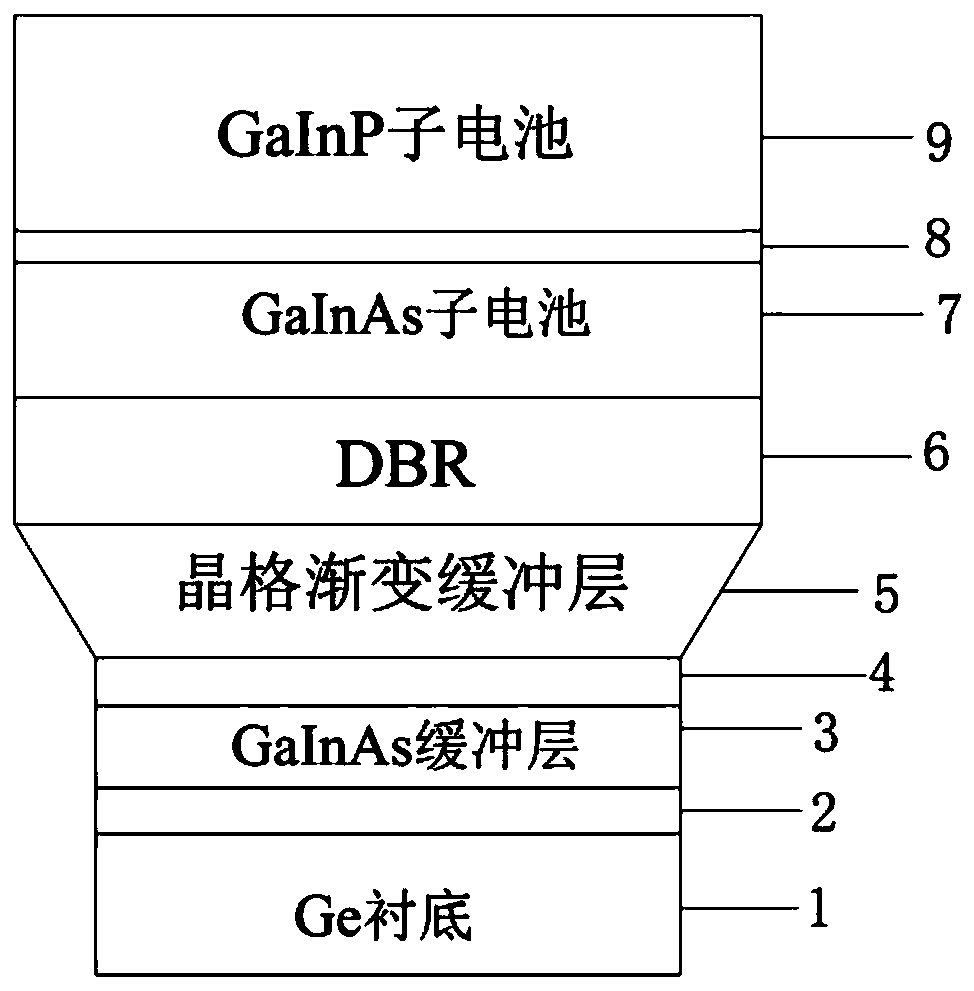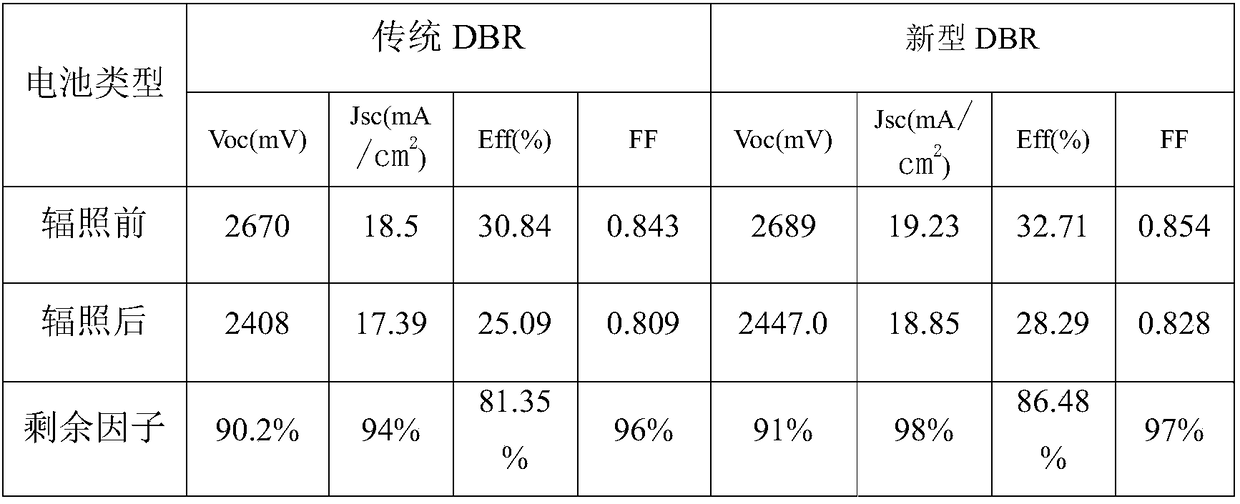Novel DBR structure for lattice-mismatching multi-junction solar cell
A technology of solar cells and lattice mismatch, applied in the field of solar photovoltaic power generation, to achieve the effects of improving photon absorption, reducing dislocation density, and improving radiation resistance
- Summary
- Abstract
- Description
- Claims
- Application Information
AI Technical Summary
Problems solved by technology
Method used
Image
Examples
Embodiment Construction
[0027] In order to further illustrate the content of the present invention, the present invention will be described in detail below in conjunction with specific embodiments and accompanying drawings.
[0028] like figure 1As shown, the lattice-mismatched triple-junction solar cell provided in this embodiment includes a Ge substrate 1, and the Ge substrate is a p-type Ge single wafer; A GaInP nucleation layer 2, a GaInAs buffer layer 3, a first tunnel junction 4, a lattice gradient buffer layer 5, a DBR structure 6, a GaInAs sub-cell 7, a second tunnel junction 8 and a GaInP sub-cell are sequentially arranged from bottom to top 9; wherein, the DBR structure 6 is a GaInNAs / AlGaInAs periodic structure, which is composed of two alloy materials, GaInNAs and AlGaInAs, and the refractive index of GaInNAs of the GaInNAs / AlGaInAs periodic structure is higher than that of AlGaInAs, and between GaInNAs and AlGaInAs and between GaInNAs and There is a lattice mismatch between GaInAs, the ...
PUM
 Login to View More
Login to View More Abstract
Description
Claims
Application Information
 Login to View More
Login to View More - R&D
- Intellectual Property
- Life Sciences
- Materials
- Tech Scout
- Unparalleled Data Quality
- Higher Quality Content
- 60% Fewer Hallucinations
Browse by: Latest US Patents, China's latest patents, Technical Efficacy Thesaurus, Application Domain, Technology Topic, Popular Technical Reports.
© 2025 PatSnap. All rights reserved.Legal|Privacy policy|Modern Slavery Act Transparency Statement|Sitemap|About US| Contact US: help@patsnap.com


